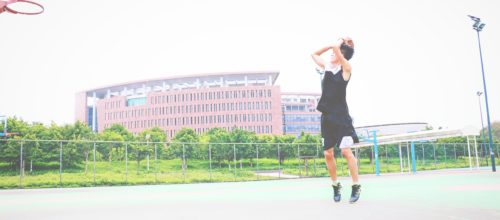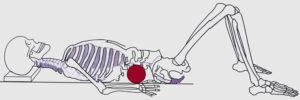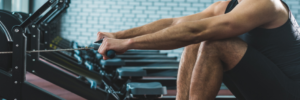
Let’s Talk About Asymmetries in Athletes and Default Posture
Back when I was working with the Toronto Raptors, I was introduced to a term known as “Default Posture” by Alex McKechnie. Alex, who is currently the director of sports performance and assistant coach of the Toronto Raptors defined this term to me as a posture that one assumes for an activity or more specifically a sport that they play. For example, in basketball, if a player is a right-handed shooter then they are going to have more development on the right side of their shoulder complex (e.g., pec, deltoid, etc.) and probably some more internal rotation of their shoulder when compared to the left. This posture that they develop over time can be defined as their ‘default’ playing posture. Essentially, it’s the posture that they develop and plays with that makes them the athlete that they are. Now, when looking at asymmetries, one can look at this in 2 different ways:
- Asymmetries are what make these uni-lateral athlete’s good at their sport
- Asymmetries are what make these athlete’s more prone to injury
Two conflicting options above, but neither are right or wrong in my opinion. Yes, asymmetries are what make athlete’s good at what they do (e.g., shooting, throwing), but they also make an athlete’s more prone to injury potentially (e.g., less stability or mobility at a joint). I believe there is a fine line when working with these type of athletes because as a strength coach we don’t want to take away from their abilities (which we may be addressing their imbalances and trying to make them more symmetrical), but at the same time we don’t want them to get hurt due to these imbalances that may exist. I think a better way to look at things is to monitor each athlete’s volume of work and try to limit it or cut it down when one belief’s it may be too much for them or the athlete may be beginning to show signs of fatigue. This would be one way to possibly address the situation where we can maintain performance and prevent injury.
Also, I do feel like it does depend on each athlete as well and their injury history. For instance, if an athlete has a history of left side back pain or right side shoulder pain, then yes it may be a good idea to focus on correcting some of the imbalances that may exist to increase the longevity of athlete. Now, this may take away from performance a bit possibly, but if an athlete can’t play due to injury, then they aren’t performing, to begin with. That’s something that I feel is important to keep in mind as well.
All in all, though, I don’t have the exact answer as to whether one should focus on making the athlete more symmetrical or instead just leave them alone per se, but I feel it does depend on each athlete and their injury history needs to be taken into account.
Just a quick and exciting thought I wanted to share today 🙂
Cheers,
Remi











